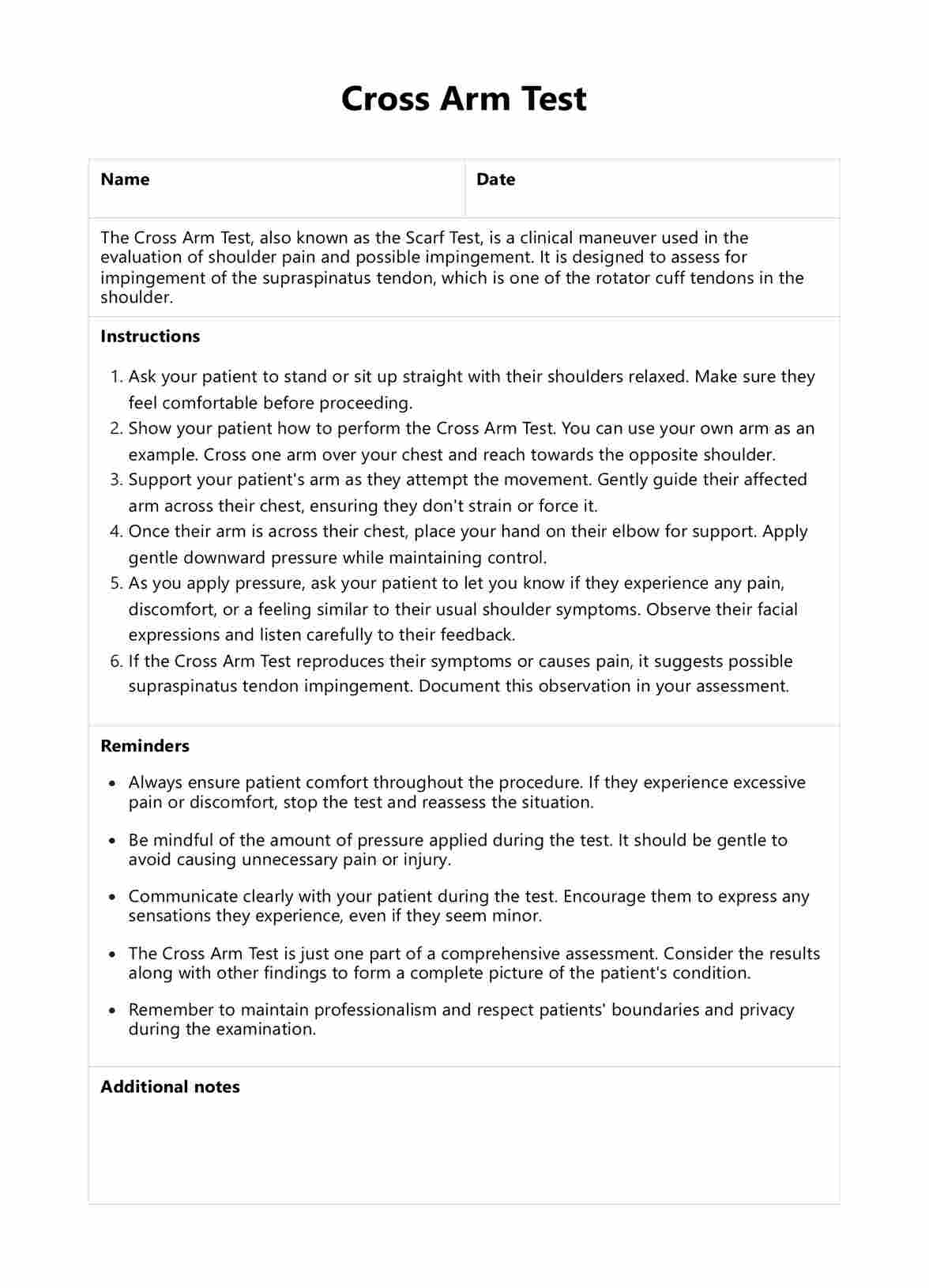This exam doesn't have a scoring system. Instead, clinicians analyze the results to make a diagnosis. A positive result indicates shoulder imbalances.

Cross Arm Test
Unpack how the Cross Arm Test works. Learn how to conduct the exam with our free downloadable PDF template.
Use Template
Cross Arm Test Template
Commonly asked questions
The Cross Arm Test measures the ability of the patient's shoulder muscles to maintain a stable position against resistance. It is also used to assess range of motion in the shoulder joint and can help identify imbalances between the left and right sides of the body.
Ask your patient to cross one arm over their chest, reaching to the positive shoulder. Then, gently apply pressure to the positive shoulder and ask them to resist your pressure.
EHR and practice management software
Get started for free
*No credit card required
Free
$0/usd
Unlimited clients
Telehealth
1GB of storage
Client portal text
Automated billing and online payments











